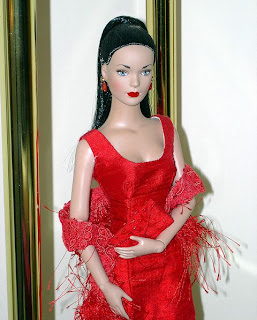Paper dolls have been around in some form or fashion as far back as 800 A.D. The first manufactured paper doll was made in 1810. Paper dolls became popular in the 18th century, where they were amusing toys for the members of the French royal court. English manufacturers used paper dolls to tell morality tales by including printed stories with the dolls. Mothers made paper dolls for their children by cutting pictures out of fashion magazines, such as Godey's Ladies Book, and gluing them to heavyweight paper. Laura Ingalls Wilder had paper dolls made by her mother, and, later, herself and her sisters. When I was a child, my mother made paper dolls for me by cutting out the pictures of the babies on the cardboard boxes of laundry detergent.
I had many paper dolls and enjoyed playing with them more than my Barbie dolls. I loved making up stories for them in my head. Some of the dolls, such as the Ginghams (pictured above) came in boxes that, when set up, contained little dioramas of an old-fashioned bedroom, kitchen, country stores, Christmas parlor, or beach scene. While the Ginghams were by far my favorites, I also had Star Princess, who came with a large diorama, Barbie and various other fashion paper dolls, Alice in Wonderland (whom I never really liked, for some reason) and even Trixie Belden and her friend Honey Wheeler. Of course all my original paper dolls disappeared over the years but from time to time I'm lucky enough to find vintage paper dolls such as the Ginghams and Star Princess on websites such as
Etsy. I also have a few modern paper dolls, including Queen Amidala from the first Star Wars prequel. Like the Ginghams, Star Princess, and many of those original paper dolls that found their way into the hands of French nobility, Princess Amidala came with a variety of dioramas. Many of the original French paper dolls were intended to be used to act out plays, and came with little stages. Paper dolls have been stimulating the imaginations of generations of little girls for hundreds of years. We plan to feature a paper doll exhibit in the Spencer Doll and Toy Museum and to have classes on the history of paper dolls and how to make them.
~Robin






